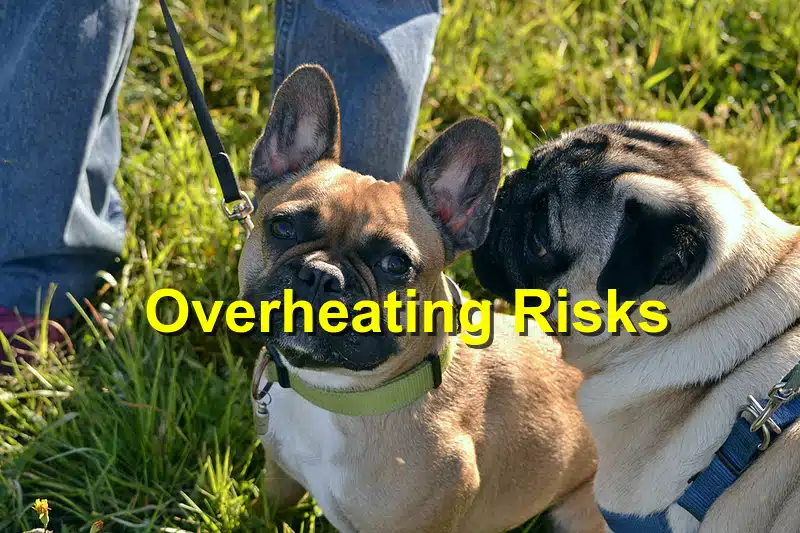Spring is a beautiful season, full of blooming flowers, warmer days, and longer outdoor adventures. But for our furry companions, these rising temperatures can present hidden dangers—especially the risk of overheating, or heatstroke. While many pet owners are cautious in the summer, spring can catch people off guard, especially on unexpectedly warm days when pets aren’t yet acclimated to the heat.
Understanding the signs, risks, and preventive measures for overheating in pets is essential to keeping them safe and healthy during the spring months.
Why Spring Heat Can Be Dangerous for Pets
Even moderate spring weather can cause pets to overheat. After a cold winter, pets may have thicker coats and be less adapted to rising temperatures. Activities like running, playing outside, or sitting in a warm car can lead to rapid heat buildup, particularly for certain pets.
Pets Most at Risk Include:
- Brachycephalic breeds (flat-faced dogs like pugs, bulldogs, or Persian cats)
- Older pets or those with chronic health conditions
- Overweight animals
- Long-haired breeds
- Pets not yet acclimated to warmer temperatures
Recognizing the Signs of Overheating in Pets
Heatstroke can happen quickly and is potentially fatal if not treated immediately. Early detection is critical.
Common Signs of Overheating:
- Excessive panting or drooling
- Red or pale gums
- Lethargy or weakness
- Vomiting or diarrhea
- Collapse or unresponsiveness
- Body temperature over 103°F (39.4°C)
Cats may show more subtle signs like hiding, panting (which is rare and serious), or drooling excessively.
💡 Tip: Always have a thermometer available and know how to check your pet’s temperature safely.
Spring Triggers That Lead to Overheating
1. Outdoor Play Without Shade or Water
Longer days mean more time outside, but without access to shade and water, pets can overheat fast—even in 70–80°F weather.
2. Being Left in Parked Cars
Even in spring, a parked car can become an oven. On a 70°F day, a car’s interior can exceed 100°F in 20 minutes.
3. Intense Exercise During the Warmest Part of the Day
Pets can’t sweat like humans. Exercise in direct sunlight can overwork their bodies before they show visible signs of distress.
4. Warm Indoor Spaces
Homes and apartments can trap heat. Sunbathing in front of windows or lounging in warm rooms can be risky if the pet can’t cool down.
How to Prevent Overheating in Spring
1. Adjust Activity Schedules
- Walk pets in the early morning or late evening.
- Limit time outdoors during midday heat.
- Always bring water on walks or trips.
2. Provide Access to Shade and Fresh Water
- Ensure pets have cool resting areas inside and outside.
- Use shaded areas for outdoor activities.
- Add ice cubes to water bowls for extra cooling.
3. Avoid Hot Surfaces
- Asphalt and concrete absorb heat. Test surfaces with your hand—if it’s too hot for you, it’s too hot for your pet’s paws.
4. Grooming and Coat Management
- Brush pets regularly to remove excess winter fur.
- Don’t shave breeds with double coats—it can damage their ability to regulate temperature.
💡 Tip: Use cooling mats or vests on warmer days, especially for brachycephalic or senior pets.
What to Do If Your Pet Overheats
If you notice signs of overheating:
- Move your pet to a cool, shaded area.
- Apply cool (not cold) water to their body, especially the belly, armpits, and paw pads.
- Offer small amounts of cool water to drink.
- Use fans or a cool damp towel to bring down body temperature.
- Seek veterinary help immediately—even if your pet seems to recover.
Heatstroke can cause organ damage even after symptoms fade.
Indoor Pets Aren’t Exempt
Indoor pets can still suffer from heat-related issues, especially in poorly ventilated homes or during sudden warm spells when air conditioning isn’t in use. Cats lounging in sunbeams or small animals like rabbits and guinea pigs in sun-facing cages are especially vulnerable.
✔ Keep indoor areas cool and well-ventilated.
✔ Monitor pet behavior on sunny days.
✔ Never place cages in direct sunlight.
Conclusion
Spring is a time for fun, fresh air, and outdoor bonding with pets—but it’s also a season that requires heightened awareness of overheating risks. By recognizing the early signs of heat stress, avoiding common triggers, and making smart choices around exercise, hydration, and shelter, you can protect your pets and ensure they enjoy a safe, happy season.
After all, a little preventive care goes a long way in helping your furry friend stay cool and comfortable—no matter how warm spring gets. 🐶🐱🌷
References: BVA, TheWholePetVet




